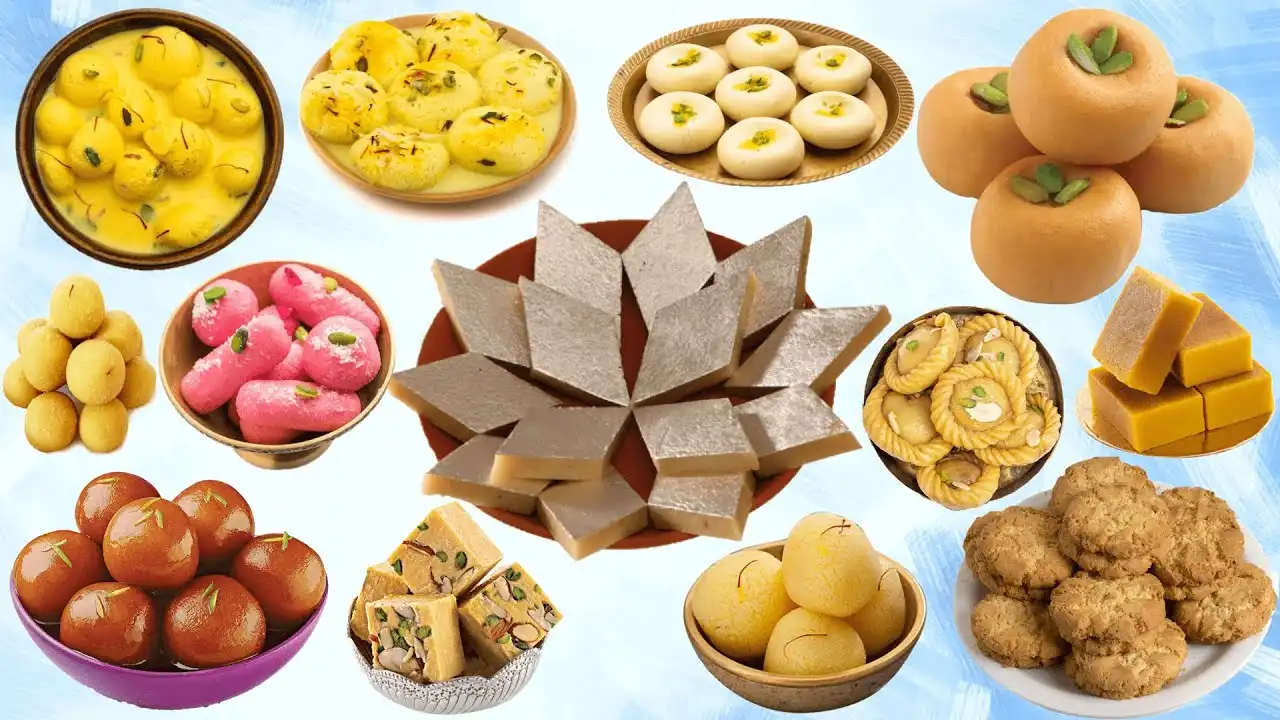Sweets and afters have always enjoyed a significant position within the fabric of Indian culture and cuisine, almost symbolising celebration and triumph. From small to grand festivals, birthdays, and other celebrations to modest picnics and whatnot, an occasion is deemed incomplete without a plate of mouth-watering sweets, as they occupy a distinctive spot in the hearts of Indians.
Let us explore the important role Indian sweet names play in the nation’s cultural tapestry. They contribute heavily to the captivating tale of the country’s rich heritage and cultural diversity.
Early mention and evolution of Indian sweets

During the Indus Valley Civilization, the art of refining sugar was invented, heralding the significant role sweets were to play in the history of Indian cuisine. With the Gupta dynasty coming into power, India began to witness sugar being made from not just sugarcane but also from other sources, such as palm, jaggery, honey, and various kinds of fruits. The Rigveda has mentioned using barley, ghee, and honey to prepare sweets.
On this note, here’s an interesting fact: ‘Manasollasa’, one of the oldest Sanskrit surviving texts, provided extensive descriptions of a variety of Indian sweet names and their methods of preparation.
The Mughals brought their Persian influence, thereby taking Indian sweet names and flavour to another level with an increased number of milk-based desserts finding their way into the Indian kitchen. But of course, today, as time progressed, each state of India has developed its own style of sweets that are unique in taste, preparation, texture, and flavouring and are prepared by techniques traditional and indigenous to the state or region with ingredients that are locally sourced.
Sweets and Indian culture and traditions: A bond that cannot be severed
Sweets in India have never been a mere culinary delight but played a significant part in enriching our culture, rendering a deeper meaning to representing the very core of this country and its people. Also regarded as a symbol of happiness and prosperity, sweets are often shared with friends and families as well as strangers believing that they will bring good luck and prosperity to both the giver and the receiver. Hence, sweets are also an integral part of religious occasions across the country.
For example, during Diwali, our houses waft with the aroma of freshly prepared sweets. Delightful sweets, such as laddoos, barfis, gulab jamuns, and more, are hand-made in every home and shared with friends and neighbours. It is this act of sharing that embodies the celebration of joy, love, and unity, strengthening and deepening all our communal bonds.
The age-old relationship between sweets and religious practices
Sweets in India also carry an undeniably spiritual relevance as across almost all the religions professed in the country, sweets are by and large offered to the deities while commemorating religious ceremonies and rituals. These delectables are believed to enhance the essence of faith that is associated with the offerings to please the gods and goddesses, which are later distributed amongst the attending devotees as the “Prasad”, such as laddoos and pedas, to mention a few, planting the seed of spiritual connection and unshakable faith.
The role of sweets in defining hospitality
Hospitality is an important and inherent aspect of being an Indian, and deserts have a prominent role in defining hospitality. Upon the arrival of a guest, we greet them with sweets and refreshments, such as roshogolla, kheer, etc. Even when someone leaves home or prepares to head for an important day whether an examination or a crucial day at work, they are usually given something sweet to eat so that they succeed in their endeavours. Whilst towards the guests, the act of serving them sweets is a gesture of respect and generosity, creating a welcoming and inviting environment for them and deepening the bond between the host and the guest.
Indian sweets and their significance to our festivals and sense of unity
It is known to one and all that Indian cuisine is incomplete without the diversity of its sweets. The range of Indian sweet names covers all the specialities covering nooks and crannies of India and in terms of preparation, they vary from being intricate to simple ones, making one spoilt for choice. Indian sweet names and item are made with different ingredients, including milk, honey, jaggery, sugar, ghee, flour, kheer, various kinds of nuts and spices and more, promising an unforgettable sensory experience tantalising taste buds. From the soft, spongy, and mouth-watering roshogollas and crunchy jalebis to melt-in-your-mouth son papdis, gulab jamun, and more, each Indian sweet names and product has a unique history and story behind its genesis and an inherently quintessential flavour as well as texture adding depth to India cuisine.
Conclusion
The relationship between sweets and Indian festivals and their cultural significance is a long and rich one as they symbolise celebration, togetherness, and prosperity. The cultural influences that have shaped the history of the country through centuries have contributed to ushering an undeniable diversification to the kinds of sweets and deserts that we find offered to us on the daily.
Moreover, being intertwined deeply with religious practices, marking the auspiciousness of a religious event, as well as enhancing social customs and mores, it is hard to imagine the school of Indian cuisine without its indigenous sweets.






